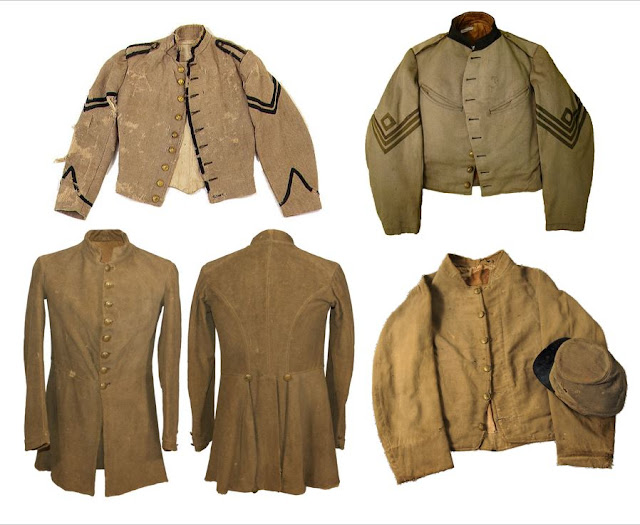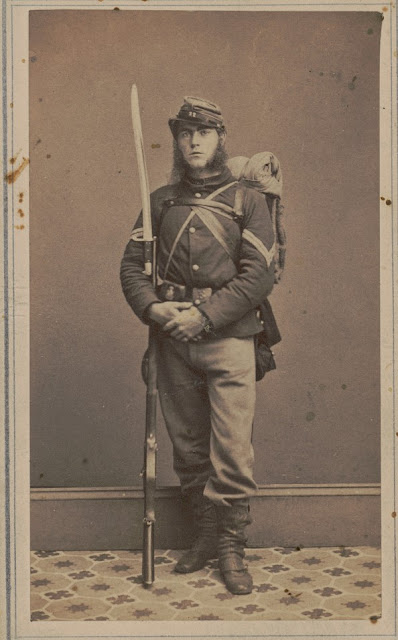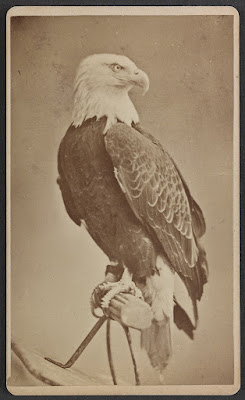Avenging a Brother: Lt. Col. John E. Murray of the 5th Arkansas at Stones River
During the Battle of Stones River, both the Army of Tennessee and Army of the Cumberland featured regiments led by “boy” colonels. 20-year-old Colonel James Brown Forman led the 15th Kentucky Infantry, part of Colonel John Beatty’s brigade of Lovell Rousseau’s division, and the story of his demise has been previously shared on this blog [see "Swallowed by the Cedars: A Day with the 15th Kentucky"].
It wasn’t until recently, however, that I came across a couple of letters from the other “boy” colonel which fleshes out the story of this extraordinary soldier. Lieutenant Colonel John Edward Murray led the 5th Arkansas Infantry with much acclaim throughout the Battle of Stones River. As part of General St. John R. Liddell’s all-Arkansas brigade, Murray’s regiment fought throughout December 31, crossing swords with Colonel Philemon Baldwin’s brigade in the fighting near the Jenkins woodlot in the morning and later against elements of Van Cleve’s division near Asbury Road around midday.
In the course of the fighting, the Arkansans captured a set
of national colors but lost heavily, losing (by Colonel Murray’s account) 159
killed and wounded. After the color bearers and guards were all shot down,
Colonel Murray seized the colors himself and led the regiment towards Nashville
Pike. His gallantry was noticed by General Patrick Cleburne who said Murray “bore
the colors of his regiment through the hottest of the fight and by his own bright
example encouraged his men to despise danger.”
What makes Colonel Murray’s story a bit unusual is that he
was all of 19 years old when he led his regiment through Stones River, making
him the youngest commanding officer of either army at the battle.
Shortly after the battle, Colonel Murray wrote a few letters home to his family back in Arkansas. The family was then beset with the news that Colonel Murray’s younger brother Robert had been killed during the battle of Corinth back in October. Both letters were shared with the Daily Arkansas Gazette long after the war, being first published in their August 23, 1889, edition.
In this first letter written to his younger sister Leila, Colonel Murray references the death of his younger brother Robert Murray who was killed at the Battle of Corinth (October 3-4, 1862) while serving as a corporal in Co. A of the 12th Arkansas Battalion of Sharpshooters. His brother was just 16 years of age while Colonel Murray was just 19 at the time he wrote this letter.
Wartrace,
Tennessee
January 10, 1863
My dear
sister,
Your letter containing an account of
Bobbie’s death was received while I was encamped at College Green, Tennessee
and I wished very much to answer it at once but found it absolutely impossible
to do so on account of the confusion and bustle which always precedes a battle.
We were preparing to move to Murfreesboro at the time so I was compelled to
defer my answer until after the battle.
I had received the news of poor Bobbie’s
death a week before I received your letter. I had seen a letter from Mr. Anderson
to his son Joe which mentioned his death. However much I may have been shocked
and disturbed at his death, I was not greatly surprised for I had heard that Cabell’s
brigade was cut all to pieces and the certain information of his death was only
the confirmation of my worst fears.
It is natural, dear sister, that we
should mourn his loss, still we ought not to give way to unrestrained grief. We
should endeavor to recollect that his death was a glorious one and one that any
Southern youth might envy. He died upon the field of battle amid the dead and
dying of both armies and his requiem was the dull, heavy roar and the sharp
rattling of musketry. He died not like the Northern minions for pay and
plunder, but for principle and the dearest rights of man. Let it be our boast
that we had a brother who sacrificed his life in the holy cause of Southern
independence. Had he died like the thousands of Northern minions whose blood
has enriched our soil since this struggle began, then indeed, would you and I
and all his relatives have cause to weep, but thank God, it is not so.
He sacrificed himself on the altar of
his country, a glorious offering to liberty. Let us not weep for him but
rejoice that he is so much better off. Besides, in a struggle like this, every
son of liberty is amply revenged. Bobbie’s already has been. I went into the
battle of Murfreesboro determined to avenge his death and I did it. It is true,
situated as I was, I could not do much with my own hand, but I carried my men
where the Yankees were thickest and the long dark line of dead Federal that
marked the track of the Arkansas brigade fully attest the truth of the
assertion that every Arkansan who has fallen in the war has been fully avenged.
For five miles across the country in
front of the town of Murfreesboro, the tracks of this brigade could be followed
by the files of Yankees who had closed their eyes forever on this earth. The
loss of my regiment was heavy, very heavy, being 159 killed and wounded, but I
am confidence that we killed or wounded four times that number of the enemy.
They made four stands while passing over those five miles, but only once did
our troops halt after starting from their first position. Whenever the enemy
halted, we started forward with a Rebel yell and never failed to break their
lines and send them flying to the rear. I had two horses shot under me but was
not touched myself.
Your affectionate brother, Edward
This second letter, written to his father Judge John Chelton Murray about a month later, provides more details about the Battle of Stones River and appears to be seeking his father’s approval for his actions and ambitions as an officer.
Wartrace,
Tennessee
February 18,
1863
It is true that IU have striven hard
to rise and make my mark as high as you could expect. In this I have in some
measure succeeded and my success has been by honorable means without
electioneering or even asking any man for his support in reaching a position
that few if any of my age have ever attainted. Aaron Burr was a major at 19 and
I was a lieutenant colonel before I was that old. I hope that I have also
succeeded in your expectations on the battlefield.
I have been in two hard-fought
battles, Perryville and Murfreesboro, and in the opinion of my superior
officers acquitted myself with credit. I believe I have written before that the
loss in my regiment at Murfreesboro was 159 killed and wounded. I had three
color bearers shot and every color corporal (eight in number) was either killed
or wounded. My three color bearers were shot one after another as fast as they
picked up the colors. After this, I picked up the flag and carried it in my own
hands for a mile, driving the enemy from every position he attempted to hold. General
[Alexander McDowell] McCook, my old preceptor at West Point, commanded the
force with which I was engaged at both Perryville and Murfreesboro. I believe I
mentioned in my letter to mother that our regiment captured a beautiful stand
of colors.
[Private John K. Leslie of Co. C, 5th Arkansas was
credited with securing a silk set of national colors belonging to an unknown Federal
regiment; this occurred in fighting that occurred near Asbury Road in the early
afternoon hours of December 31st. It is possible that these were the
national colors of the 86th Indiana Infantry. “Private John K.
Leslie captured a stand of colors with his own hand and afterwards, when badly
wounded by a shell, refused to go to the rear until I had to order him to go,”
Colonel Murray proudly reported. General St. John R. Liddell also states in his
after-action report that it was at this same time that Colonel Murray grasped
the colors of his regiment and carried them to the brigade’s final position
near the Nashville Pike. Colonel Murray’s gallantry was noticed by General
Patrick Cleburne who said Murray “bore the colors of his regiment through the
hottest of the fight and by his own bright example encouraged his men to
despise danger.”]
I saw Mr. Singelton today who was at
the battle of Corinth. He corroborates all the good accounts that I had
previously heard of my gallant and lamented brother conducted on that bloody
and unfortunate field.
You must write soon and please for my sake, do not let your anxiety on my account prey upon your health. That I may fall in this war is possible, but rest assured that if I do, it will not be in a manner to cause the blush of shame to mantle the cheek of any relative or friend of mine at the mention of my name. If I fall before the enemy, it will be in a manner worthy of your son, Edward.

Read Fletcher noted that a Colonel Murray bore a striking resemblance to a young Colonel Roberdeau Wheat from Louisiana who is pictured above.
Read Fletcher, who provided these letters to the Daily
Arkansas Gazette, knew Colonel Murray in the prewar days in Arkansas and
entertained a very lofty opinion of the youth. “He was the embodiment of
courage, frankness, truthfulness, and every sentiment of honor,” he noted. “He
was absolutely without fault. His physique was handsome and his face was ever illuminated
with a smile, and his dark brown eyes were the windows of the lofty spirit
within. He was handsome, graceful, and there was a magnetism in him that he
made friends wherever he went. His resemblance to the late Colonel Bob Wheat (who
fell at the battle of Manassas as commander of the Louisiana Tigers) when a
young man was very striking and in the love of adventure and excitement of
battle, they were very much alike.”
John Edward Murray was born March 13, 1843, in Fauquier
County, Virginia and moved to near Pine Bluff, Arkansas in 1849 with his
family. Murray received an appointment to West Point in 1860 but upon the
secession of Arkansas, he resigned and returned home. His first wartime
activity was training troops under the command of his old West Point commandant
General William J. Hardee, but he was soon joined the 5th Arkansas
Infantry as a private, quickly climbing the ranks from private to sergeant
major, then commissioned as a lieutenant then lieutenant colonel, and all by
the age of 18!
Murray participated with his regiment at Perryville and led it at Stones River as he describes in the letters above. He led the consolidated 5th/13th Arkansas at Chickamauga and was promoted to full colonel. The following summer, while serving as a brigade commander, he was mortally wounded July 22, 1864, during the Battle of Atlanta while leading three regiments in an attack upon the Union position. He died the next day and in 1867 his remains were moved to Mount Holly Cemetery in Little Rock, Arkansas.
To learn more about the Battle of Stones River, be sure to purchase a copy of my campaign study Hell by the Acre, recently awarded the Richard B. Harwell Award from the Atlanta Civil War Roundtable as best Civil War book of 2024. Available now through Savas Beatie.
Source:
“War
Memories: An Old Soldier’s Account About an Arkansas Boys,” Daily Arkansas
Gazette (Little Rock, Arkansas), August 23, 1889, pg. 5













Comments
Post a Comment